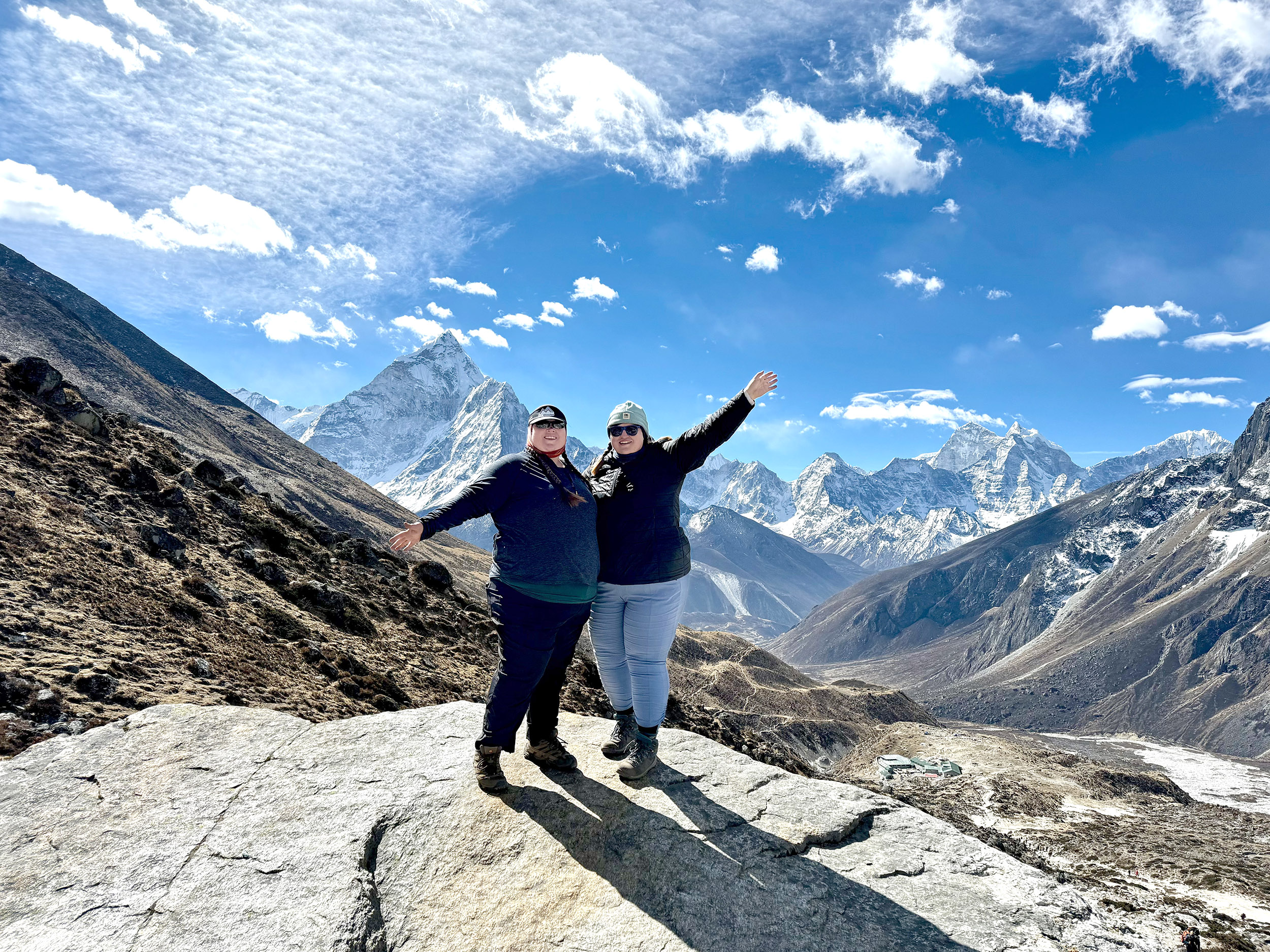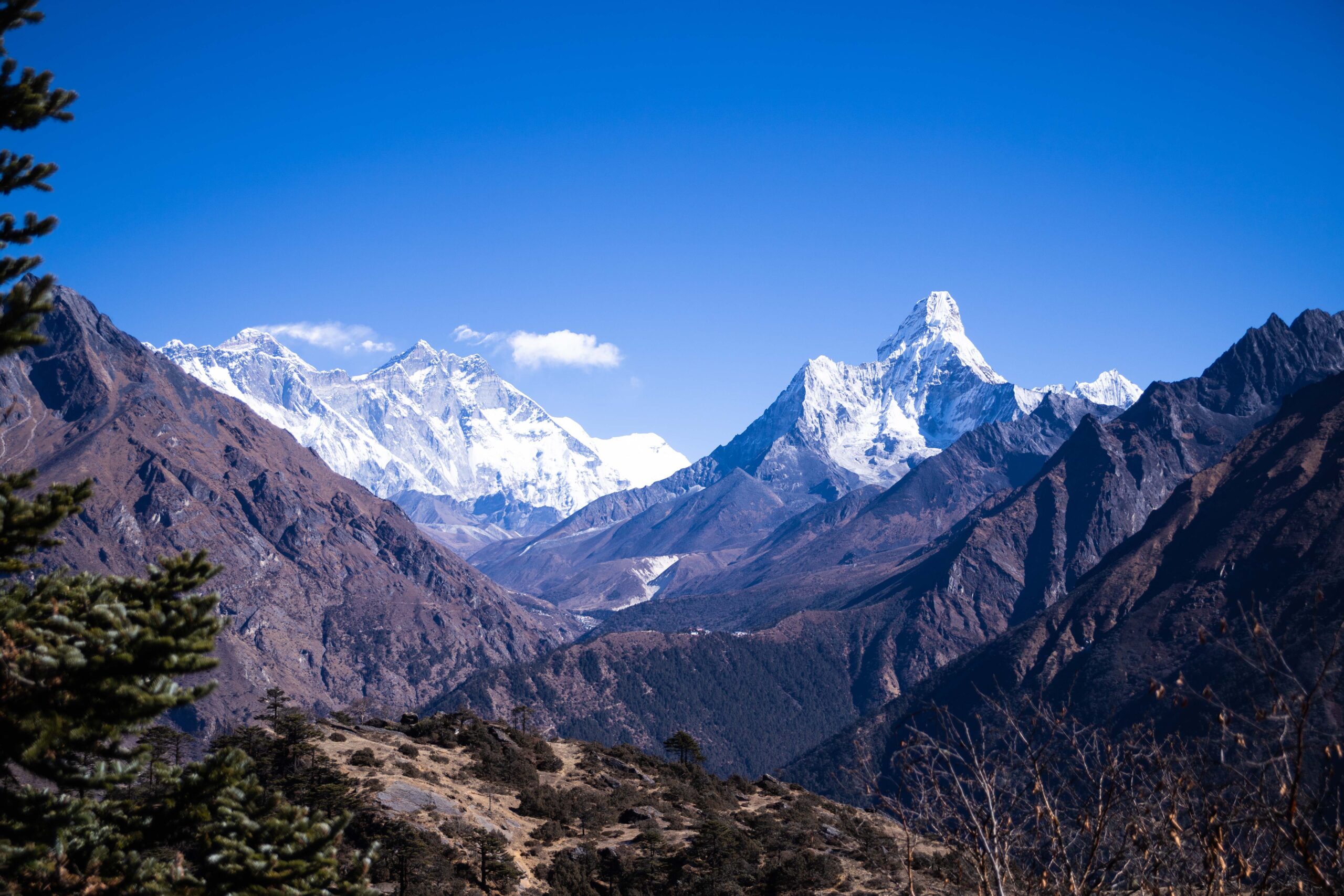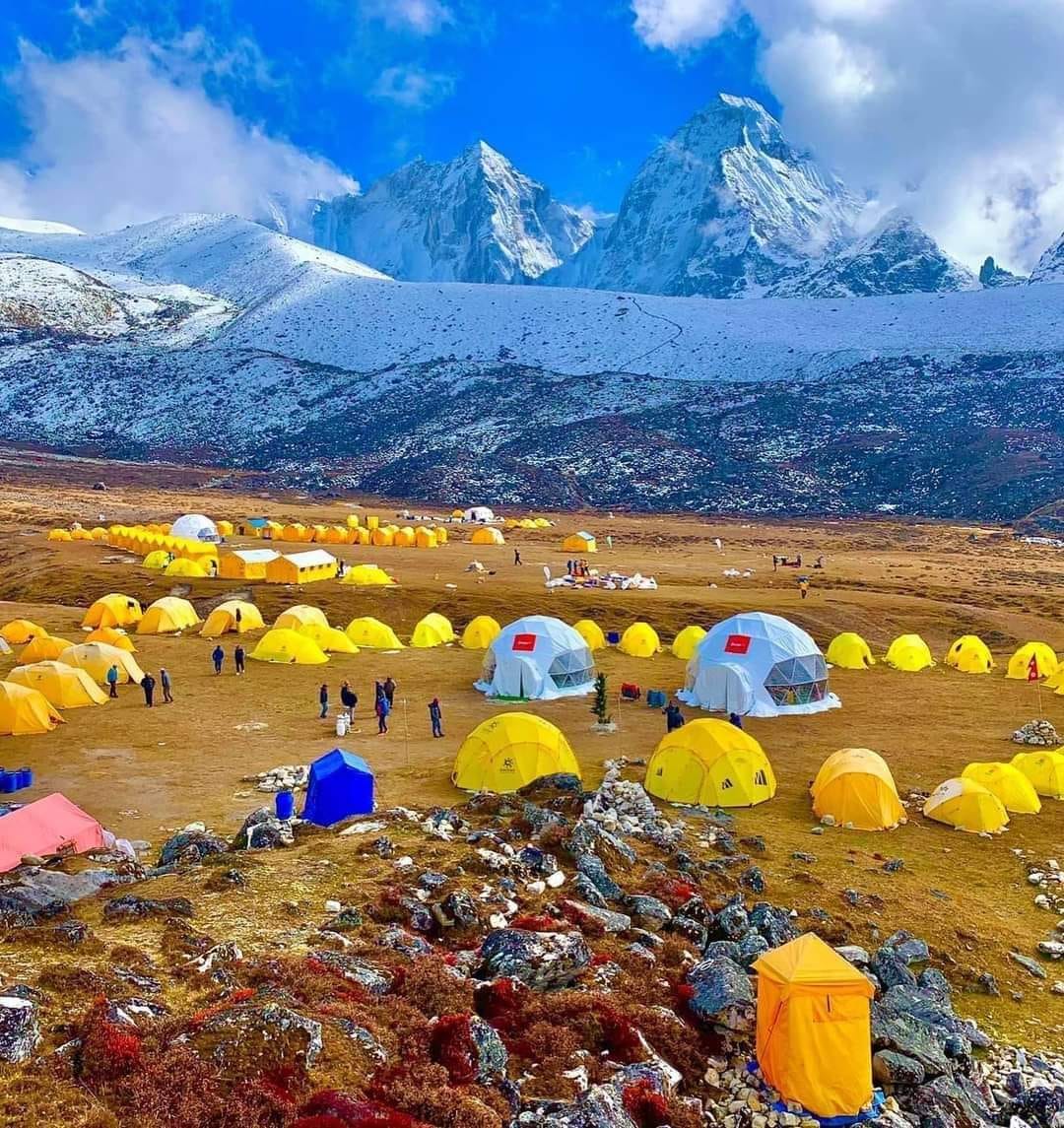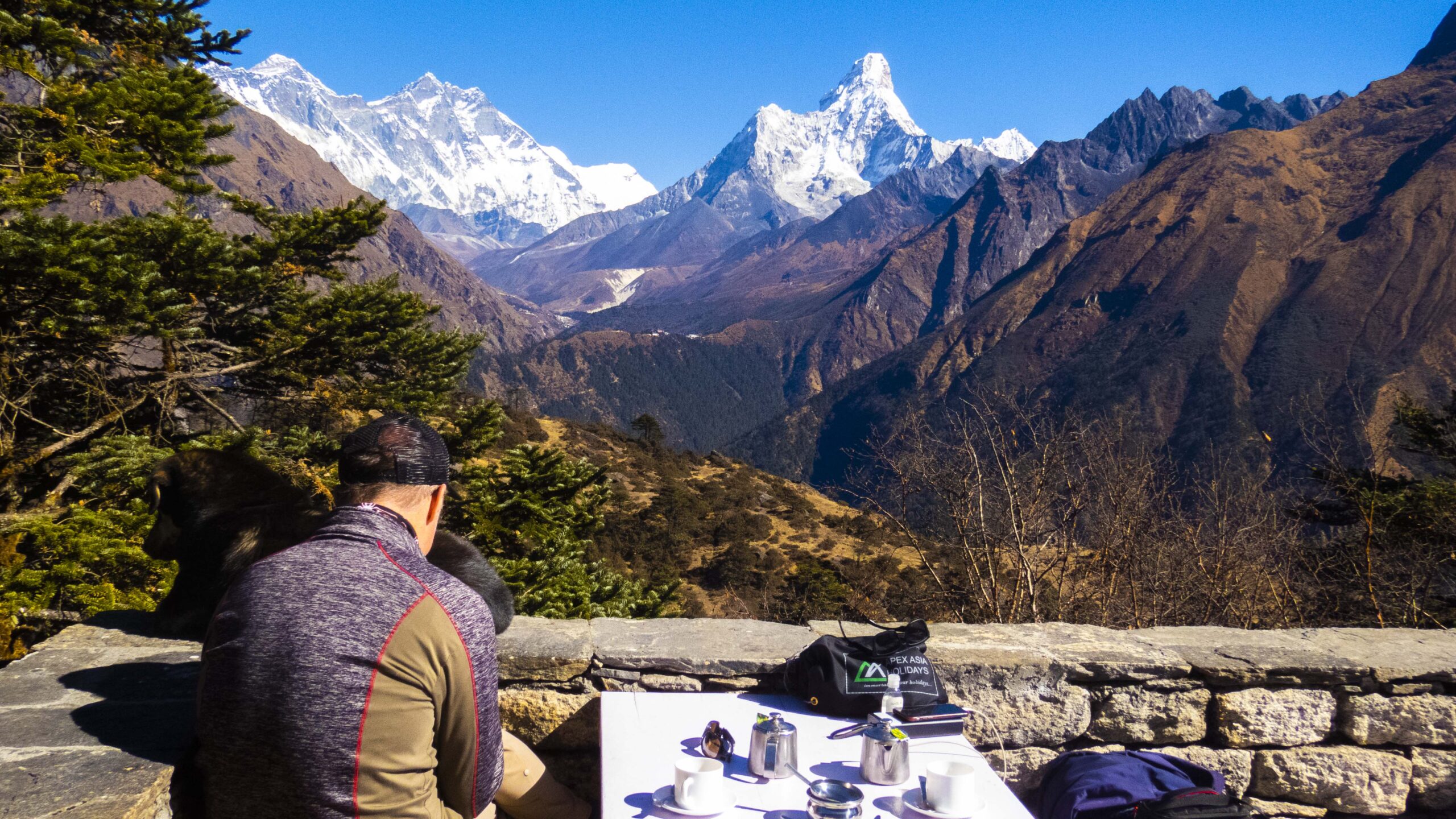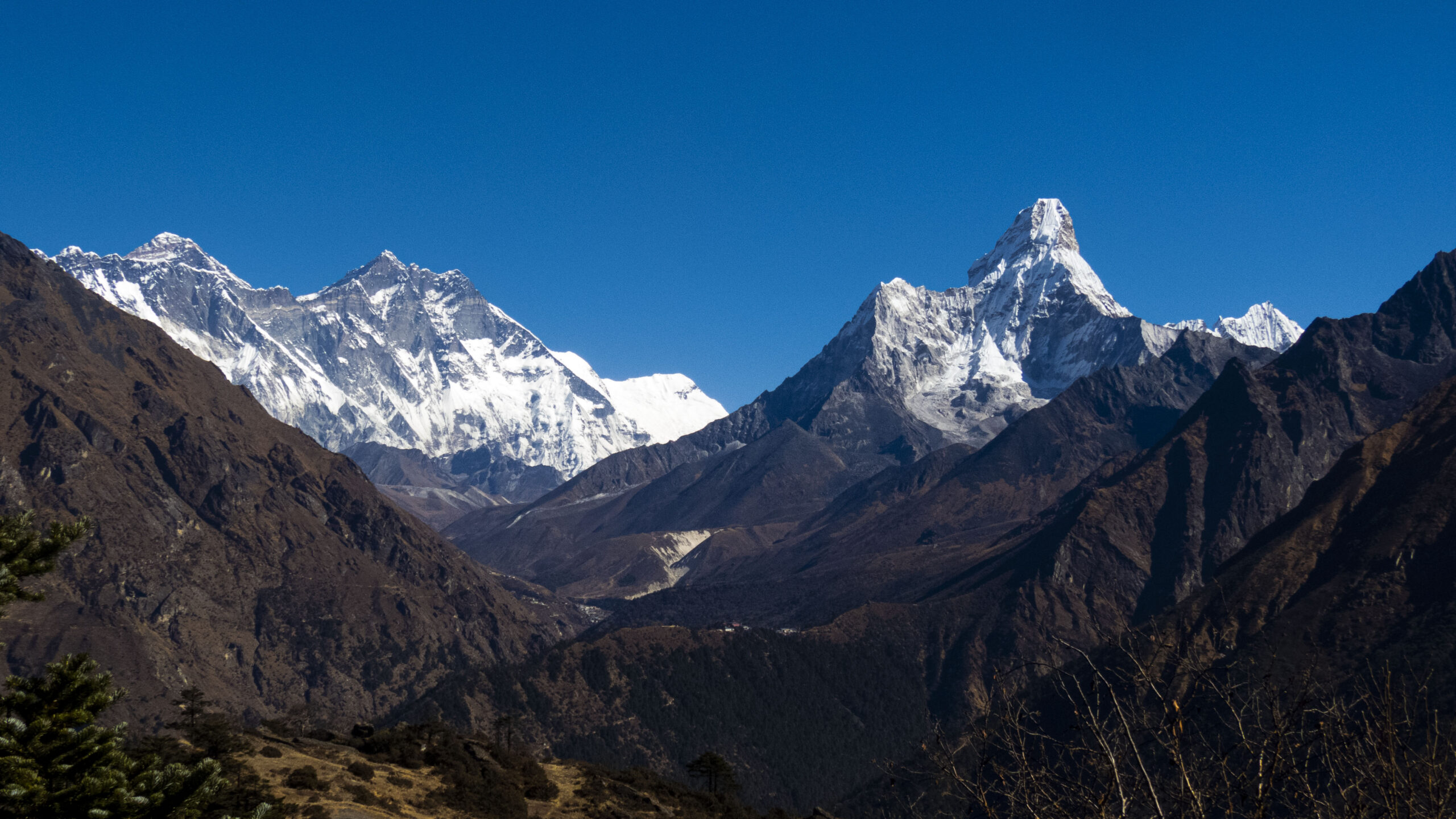Trip Overview
Trek the Special Everest Base Camp: A Unique Adventure for Plus-Size Enthusiasts
Are you an adventure enthusiast with a plus-size dreaming of conquering the world’s tallest peak? Broad Adventure and 37 Minutes have joined forces to offer a unique Everest Base Camp trekking experience tailored just for you.
Welcome to our 19-day Everest Base Camp trek, specifically designed for plus-size trekkers. Combining adventure, comfort, and cultural immersion, this meticulously planned itinerary ensures gradual acclimatization, accommodating those who need a moderate pace and extra support. From the vibrant streets of Kathmandu to the majestic heights of Everest Base Camp, this journey offers an unparalleled experience of Nepal’s natural beauty and rich heritage. With the added convenience of a helicopter return and a focus on comfort, you can fully immerse yourself in the breathtaking landscapes and warm hospitality of the Sherpa community, making this trek a truly unforgettable adventure.
We believe that everyone, regardless of body size, should have the opportunity to explore this awe-inspiring region. Our partnership is dedicated to making your journey to Everest Base Camp accessible, enjoyable, and safe.
Trekking to Everest Base Camp is an adventure of a lifetime, offering breathtaking landscapes and a profound sense of accomplishment. While the trek is achievable for adventurers of all shapes and sizes, plus-size trekkers may have specific needs to ensure a safe and enjoyable experience. Our program is designed to help larger-body trekkers prepare for and conquer the Everest Base Camp trek.
Nestled in the heart of the Himalayas, the Everest Base Camp Trek is a remarkable odyssey that attracts adventurers from around the globe. It offers stunning landscapes, a rich cultural tapestry, and a unique sense of achievement. Join us on an extraordinary journey through the grandeur of the Everest Base Camp Trek.
Since the 1950s, the world’s highest peak, Mt. Everest, and its base camp have been drawing tourists. Every year, thousands of travelers worldwide visit the base camp at 5360 meters. The Everest Base Camp Trek has become a buzzword among trekkers, symbolizing a true adventure challenge.
Tour Highlight
- Kathmandu Sightseeing & Scenic Flight: Explore Kathmandu’s UNESCO sites before a thrilling flight to Lukla with stunning Himalayan views.
- Trekking & Cultural Immersion: Trek through Sagarmatha National Park, visit Namche Bazaar and Tengboche Monastery, and engage with Sherpa culture in traditional villages.
- Acclimatization & Iconic Destinations: Enjoy acclimatization hikes with spectacular views, reach Everest Base Camp, and witness a sunrise at Kala Patthar.
- Comfort & Support: Stay in comfortable lodges, benefit from a helicopter return from Gorak Shep to Lukla, and receive personalized support tailored for plus-size trekkers.
Trip Facts
Trip Itinerary Expand All
Arrival in Kathmandu (1,400m)
- Activity: Arrival at Tribhuvan International Airport, transfer to hotel. Rest and recover from the journey
Kathmandu Sightseeing and Trek Preparation
- Activity: Visit UNESCO World Heritage sites – Swayambhunath (Monkey Temple), Pashupatinath, Boudhanath, and Kathmandu Durbar Square. Pre-trek briefing and equipment check.
Drive to Ramechhap
- Activity: Early morning drive to Ramechhap (approx. 4-5 hours) to avoid flight delays from Kathmandu to Lukla.
Fly to Lukla (2,800m) and Trek to Phakding (2,652m)
- Flight Duration: 20 minutes.
- Trek Distance: 8km, 3-4 hours.
- Activity: Scenic flight to Lukla, trek to Phakding through villages and along the Dudh Koshi River.
Trek from Phakding to Jor Salle
- Trek Distance: 11km, 6-7 hours.
- Activity: Trek along Dudh Koshi River and stay overnight in the bank of Dhudh Koshi.
Trek to Namche Bazaar (3,440m)
Acclimatization Day in Namche Bazaar
- Activity: Hike to Everest View Hotel (3,880m) for acclimatization, visit Sherpa Culture Museum and Namche Bazaar.
Trek from Namche Bazaar to Phunki Thaga
- Trek Distance: 5km, 3-4 hours.
- Activity: Gentle trek to Phuki Thanga with views of Ama Dablam, Lhotse, and Everest.
Trek from Funki Thanga to Pangboche (3985M)
- Trek Distance: 6km, 4-5 hours.
- Activity: Trek through rhododendron forests, visit the famous Tengboche Monastery, and reach to Pangboche
Trek from Pangboche (3,985m) to Dingboche (4410M)
- Trek Distance: 5km, 3-4 hours.
- Activity: Gradual trek to Pangboche with stunning mountain views.
Acclimatization Day in Dingboche
- Activity: Hike to Nagarjun Hill (5,100m) for acclimatization, rest and explore Dingboche.
Trek from Dingboche to Thukla (4,620m)
- Trek Distance: 4km, 3-4 hours.
- Activity: Gentle trek to Thukla with time for rest and acclimatization.
Trek from Thukla to Lobuche (4,910m)
- Trek Distance: 5km, 3-4 hours.
- Activity: Trek past memorials for climbers, continue through the Khumbu Glacier moraine
Trek from Lobuche to Gorak Shep (5,164m)
- Trek Distance: 4km, 3-4 hours.
- Activity: Trek through the glacial moraine to reach Gorak Shep.
Trek to Everest Base Camp (5,364m) and back to Gorak Shep
- Trek Distance: 7km, 6-7 hours.
- Activity: Trek to Everest Base Camp, explore and take photos, return to Gorak Shep.
Morning Hike to Kala Patthar (5,545m) and Heli Ride to Lukla
- Activity: Early morning hike to Kala Patthar for sunrise views of Everest, helicopter flight to Lukla.
Fly to Ramechhap, Drive to Kathmandu
- Activity: Morning flight from Lukla to Ramechhap, drive back to Kathmandu (4-5 hours).
Leisure Day in Kathmandu
- Activity: Free day for shopping, rest, or additional sightseeing.
Departure from Kathmandu
- Activity: Transfer to Tribhuvan International Airport for departure.
Itinerary Informations
The provided itinerary is standard, and if you want to customize it, you can do it. OR you can also go through our Plan Your Holidays page.
Lukla flight from Manthali Airport, Ramechhap:
Due to the air traffic in Kathmandu during the peak months (March, April, May, September, October, and November), CAAN has promulgated the notice that the flight has been shifted to Manthali from Kathmandu to Lukla. If there are changes will update you ASAP.
Lukla Flights:
All we know is that the Lukla flight is sensitive in the case of weather. Instantly it may be delayed and canceled as well. A tiny Himalayan airport has difficulty facing heavy traffic which is why sometimes the flight may be delayed. So, we suggest, trekking in Everest, please make sure at least you have two days additional in the program. In the case of a weather cancellation, the best alternative to get Lukla is to charter a helicopter because the copter can fly in a lower visibility of 1,500 meters. However, Twin Otter and Dornier aircraft need minimum visibility of 5,000 meters.
What about the Helicopter cost? Is it getting instant or need to be in the queue?
A helicopter charges US $ 2500 per flight to Lukla from Kathmandu. And the US $ 500 per person on a sharing basis. Except for the emergency, during the high season and extreme weather of Lukla, you may not get a helicopter instantly or need to be in the queue. Also, if you have requested the Helicopter for less than 24 hours, you may need to wait because of the limited number of helicopters, and they’re using various activities in the mountains.
What Includes & Excludes
Includes
Accommodation
- Four Nights Hotel Accommodation in Kathmandu in BB Plan
Flight
- Ramechhap - Lukla Return tickets
Transports
- All ground transportation as per itinerary in a private vehicle.
Meals
- All meals (Breakfast, Lunch and Dinner) during the trekking
Guides and Porters
- One porter for each trekker and two guides for above 5 person of trekkers
Additional Services
- Accommodation, foods, insurance, salary, equipment, and medicine for field staffs.
- All ground transportation as per itinerary
- Farewell dinner one night before the client’s final departure in a typical Nepali Restaurant with culture dance. Your guide will accompany you.
- Trekking/tour permits, entrance fees.
Excludes
- Anything not mentioned in the price includes.
- Personal trekking gears/equipment.
- Tips for trekking staff (Tipping is expected).
- Lunch and dinner in the city.
- All drinks including bottled/boiled water along the trekking route
- Visa fees and travel insurance.
- International airfare to and from Nepal.
Guest Reviews
We highly recommend Broad Adventures they provided exceptional guidance on our Everest Base Camp trek. Our guide’s Gynau’s professionalism,...
Read More...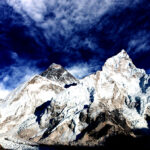
David Neufeld
CanadaIf you are looking for a tour to see the Mt Everest base camp look no further. I have...
Read More...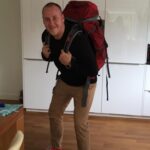
Tim Troost
AustraliaI was looking at an exotic trek adventure. After looking for a bunch of places to go I thought...
Read More...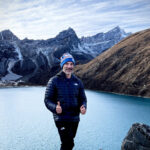
Keith B.
USAKeshab was our most gracious and amiable guide in Kathmandu and to Everest basecamp. My wife accompanied me on...
Read More...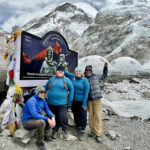
Ken Byers , Nevada
USAMy son and I went for trekking in Nepal in 2009, and we were lucky to have Keshab Khanal...
Read More...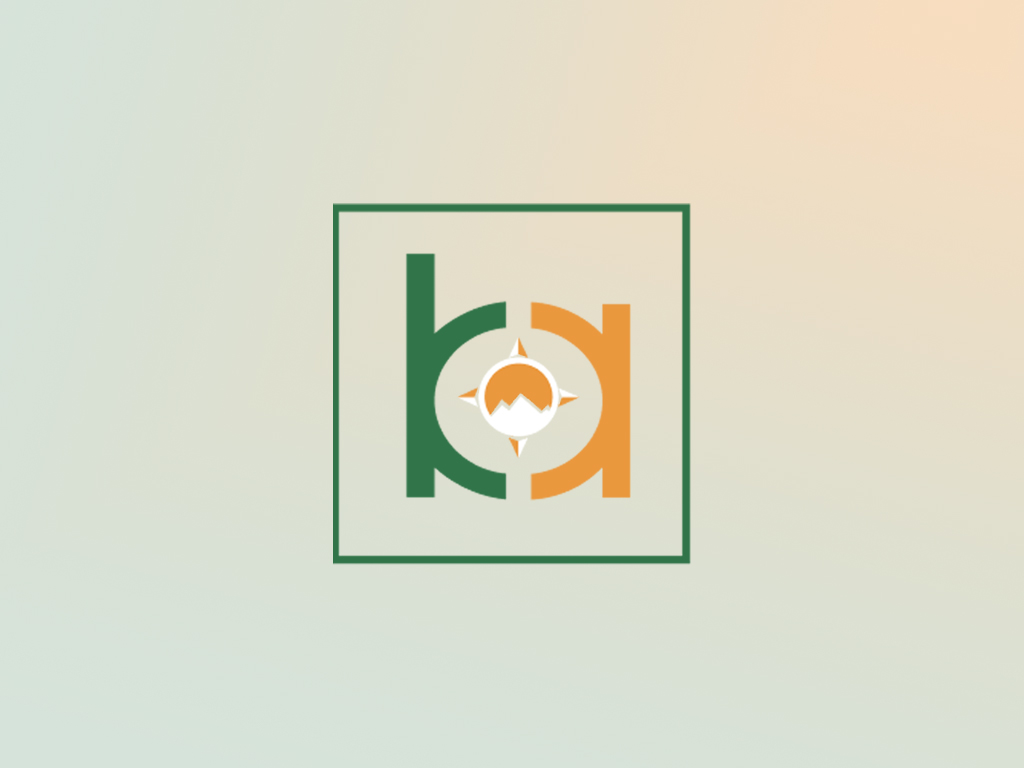
Dr. Raphael Hemmendinger
Jerusalem , IsraelIn 2005 I came to Nepal for the second time, this time whith a very specific queste. I wanted...
Read More...
Richard Rijken
Amsterdam , NetherlandsI was always willing to go to the Himalayas and explore some of the beauties hidden in the sacred...
Read More...
John Peter
Manchester , United KingdomNamaste! This was my first time to Nepal, and I had an amazing time on my trek. From the...
Read More...
David Patrician
Hamburg , GermanyI was on trekking from 24.10.10 to 5.11.10 in the half part of Annapurna circuit from Bhulbhule to Jomsom....
Read More...
Vaya Bairaba
Athens , GreeceEquipment List
Prioritize Quality: Lightweight, Durable, and Versatile Gear for Your Trek
Note:
The key is to prioritize lightweight, durable, and versatile gear. It’s important to test and familiarize yourself with your equipment before embarking on a trek. We strongly recommend 37 Min for your clothing. If you find a particular brand that meets your criteria for quality, that’s great, but always prioritize functionality and reliability.
Warmth
- Neck Warmer
- Light weight Down Jacket and Sleeping Bag
- A pair of lightweight socks, a good option for the lower / warmer parts of the trail and also on lodges at the time of dinner.
- A pair liner woolen gloves for mild days and heavy for morning and evening
- Warm wool or synthetic hat
Outfit
- Shoes/Boots
- A pair light trekking shoes or sneakers to wear in and about camps or lodge.
- A pair light to medium weight waterproof hiking/trekking boots. Make sure the size and should have to be avoidable for blister.
- At least four pairs of liner socks, synthetic. And three pair heavyweight socks to be worn over liner socks.
- Two pair of trekking pants, preferably that zip on/off at the knees.
- Two pairs of lightweight long underwear.
- Two pairs of nylon hiking shorts.
- A soft shell jacket, water resistant, with insulation, underarm ventilation zippers. The full front zipper is preferable for ventilation.
- Two long sleeve polyesters, light colored shirts for sunny days.
Accessories
- Small Day Pack
- Underwear, stay away from cotton.
- For women two synthetic sports bras, no cotton.
Electronics
- Additional Batteries Powerbank , Solar Charger
- Additional batteries for Head Lamp
- Head Lamp
Miscellaneous but Important
- Toiletries
- Water purification Iodine tablets
- Water bottle/bladder
- UV protective glacier sunglasses – better to have a side shield.
Important Info
Personalized Support
- Customized Pacing: Our itinerary is designed with moderate daily trekking distances, allowing ample time for rest and acclimatization to ensure comfort and safety for larger-body trekkers.
- Porter Assistance: Dedicated porters are available to carry personal gear, reducing the physical strain and allowing trekkers to enjoy the journey more comfortably.
- Health and Wellness Checks: Regular health check-ups will be conducted by experienced guides to monitor your well-being and manage altitude-related issues promptly.
Accommodations and Facilities
- Comfortable Teahouses: Stay in well-appointed teahouses equipped with thicker mattresses, warm bedding, and adequate facilities to ensure a restful night’s sleep.
- Nutritious Meals: Enjoy high-calorie, nutritious meals designed to sustain energy levels throughout the trek. Special dietary requirements can be accommodated with prior notice.
Trekking and Helicopter Experience
- Scenic Helicopter Return: After reaching Everest Base Camp and Kala Patthar, enjoy a comfortable and scenic helicopter flight back to Lukla, reducing the physical demand of trekking back and providing a unique aerial perspective of the region.
- Everest Viewpoints: Special attention is given to ensure trekkers visit the best viewpoints, such as Everest View Hotel and Kala Patthar, for unforgettable vistas of Everest and surrounding peaks.
Acclimatization and Rest Days
- Strategic Acclimatization: Additional acclimatization days are included at key points such as Namche Bazaar and Dingboche, with optional acclimatization hikes for those who wish to explore more while adjusting to higher altitudes.
- Leisurely Schedules: Daily trekking schedules are flexible, allowing for slower pacing, frequent breaks, and extended lunch stops to rest and re-energize.
Cultural and Educational Highlights
- Cultural Immersion: Engage deeply with the Sherpa culture through visits to local monasteries, museums, and interactions with the community. Learn about their traditions, lifestyle, and the history of Himalayan mountaineering.
- Guided Tours: Professional, knowledgeable guides will provide insights and stories about the region, ensuring a richer and more informative trekking experience.
Transportation and Logistics
- Ramechhap Flight Alternative: To avoid potential delays and congestion at Kathmandu airport, the itinerary includes a drive to Ramechhap for the flight to Lukla, ensuring a smoother travel experience.
- Comprehensive Logistics: All transportation, including airport transfers, internal flights, and the drive from Ramechhap to Kathmandu, are meticulously planned and included in the itinerary for a hassle-free journey.
Get Trip PDF file
Why travel with
Broad Adventures
Since 2010, we have curated unique itineraries that offer once-in-a-lifetime experiences, ensuring every trip is filled with joy and adventure. Our focus on the fun factor and the right amount of challenge allows you to achieve a profound sense of personal accomplishment, all while enjoying the camaraderie of like-minded travelers.
Small-Group Adventures
Join an intimate group of like-minded travelers who share your passion for discovering the world's wonders safely and confidently. Our small group settings foster a deeper connection with your fellow explorers and the incredible destinations we visit.
Expert Local Guides
We exclusively employ local guides and porters for their unparalleled knowledge and expertise. Their insights and firsthand experiences enrich your journey, giving you a deeper understanding and appreciation of the local culture, history, and environment.
Responsible for Tourism
Your safety is our utmost priority. Our dedicated team of trained professionals ensures the highest standards of care, including providing fresh and hygienic meals, comprehensive First Aid supplies, and round-the-clock communication services. We are committed to responsible tourism practices, emphasizing the importance of sustainable and ethical travel.
Health and Saftey
Promoting responsible tourism is essential, as it calls for a collective effort from everyone involved in the industry. By prioritizing health and safety, we ensure that each journey is not only enjoyable but also respectful of the destinations and communities we visit.
How can we help you?
- City Tour Equipment
- City Tour Season
- Climbing Equipment
- Climbing Season
- General Questions
- Guide and Staffs
- Nepal Overview
- Tipping
- Transportations
- Trekking Equipment
- Trekking Season
- VISA info
- Weather and Temperature
Do you provide any equipment for the trek?
Broad Adventure provides you a basic equipment like a Sleeping Bag and a down Jacket, for the tea-house trek. And for the climbing trip, we provide the basic equipment. For a camping trek check it once including the section.
What is the time zone of Nepal?
NPT (UTC+05:45)
What cultural attractions can I explore in Kathmandu?
Kathmandu is home to historical sites like Durbar Square, Swayambhunath (Monkey Temple), and Pashupatinath Temple. These landmarks showcase Nepal’s rich cultural and religious heritage, providing visitors with a deep insight into the country’s history.
What are the must-visit cities in Nepal?
Kathmandu, Pokhara, Bhaktapur, and Patan are popular cities offering rich cultural experiences. Each city has its own unique charm, historical sites, and vibrant local markets.
Do you provide any equipment for the trek?
Broad Adventure provides you a basic equipment like a Sleeping Bag and a down Jacket, for the tea-house trek. And for the climbing trip, we provide the basic equipment. For a camping trek check it once including the section.
Do I need to tip the guide and porters? What is the standard tip?
Tips is expected by your team members and normally the standard is 10% of your total trip cost.
What is the climbing season in Nepal?
The main climbing seasons are spring (April to May) and autumn (September to November). During these times, the weather is more stable, providing safer and more favorable conditions for climbing expeditions.
Are there other mountains in Nepal suitable for climbing?
Yes, Nepal is home to numerous trekking peaks and mountains suitable for climbing, such as Island Peak, Mera Peak, and Lobuche East. These peaks offer a challenging yet rewarding experience for climbers of various skill levels.
Can I climb Mount Everest as a tourist?
Climbing Mount Everest requires significant preparation, experience, and permits. Most climbers join organized expeditions with experienced guides. Climbing Everest is a serious undertaking that demands physical fitness, technical skills, and a high level of commitment.
Do I need to tip the guide and porters? What is the standard tip?
Tips is expected by your team members and normally the standard is 10% of your total trip cost.
What is the voltage and plug type used in Nepal?
The standard voltage is 230V, and the plug type is the Europlug (Type C) and the British-style plug (Type D). It’s advisable to bring adapters if necessary.
What is the voltage and plug type used in Nepal?
The standard voltage is 230V, and the plug type is the Europlug (Type C) and the British-style plug (Type D). It’s advisable to bring adapters if necessary.
Is it necessary to get travel insurance for Nepal?
Yes, travel insurance is highly recommended, especially for trekking and adventure activities. Ensure that your insurance covers medical emergencies, evacuation, and trip cancellations.
What languages are spoken in Nepal?
The official language is Nepali, but English is widely understood in tourist areas. Additionally, various ethnic groups have their own languages.
What is the currency used in Nepal, and are credit cards widely accepted?
The official currency is the Nepalese Rupee (NPR). While major cities and tourist areas accept credit cards, it’s advisable to carry cash in remote areas. ATMs are available in urban centers.
How can I get around within cities in Nepal?
Transportation options include taxis, rickshaws, and local buses. Walking is also a great way to explore the cities, especially in the old quarters. Many cities have well-preserved historic areas, and navigating them on foot allows for a more immersive experience.
What cultural attractions can I explore in Kathmandu?
Kathmandu is home to historical sites like Durbar Square, Swayambhunath (Monkey Temple), and Pashupatinath Temple. These landmarks showcase Nepal’s rich cultural and religious heritage, providing visitors with a deep insight into the country’s history.
Can I climb Mount Everest as a tourist?
Climbing Mount Everest requires significant preparation, experience, and permits. Most climbers join organized expeditions with experienced guides. Climbing Everest is a serious undertaking that demands physical fitness, technical skills, and a high level of commitment.
Are permits required for trekking in Nepal?
Yes, trekking permits are required for most trekking regions. The type of permit depends on the specific trekking area. It’s important to obtain the necessary permits from the respective authorities to support local conservation and management efforts.
When is the best season for treks in Nepal?
From March to mid-June and September to December is the best season for treks.
What is the fitness required for the treks?
Generally, to trek in Nepal we should have good physical and health conditions. And also able to walk 4- 7 hours in day at a high altitude with your little backpack.
Do you pick me up at the Airport upon my arrival?
Yes, our airport representative welcomes you at the airport and transfers you to the hotel in a private tourist vehicle.
Does my guide/porter speak English?
They speak English. All the guides are professional and due to their professionalism, they speak good English. The guide’s English is enough to explain the local culture, activities, and religions.
Are the treks and tours secured? What about the security?
Providing security to our clients is our principal. The government-licensed holder guides and other crew members are carefully assigned for your trip. Even though, would like to counsel you to take care of your equipment, and bags. If you doing a tea-house trek your accommodation is in a local guesthouse, where you have to be a precaution yourself at all times. And if you are on a camping trek always keep your bags inside the tent and while at nighttime please keep your bag in the middle of the tent. The camping leader assigns a Sherpa as a guard throughout the nighttime.
What sort of ground transportation do you use?
Normally we assign a car for up to 2 people and a Jeep for up to 5 people and then a bus for up to 14 PAX and Coster and Sutlej Bus depending on group size. There are some trekking routes, which are dirt roads for them we assign 4WD Jeeps. It also depends on what services you opt for.
Are the staff insured by your company?
Yes, all of the staff and crew members are insured.
Should I need to join the group?
Joining a group depends on your booking and the option that you choose. If you have booked for Private Trip then obviously you will not join. Otherwise, normally the same trip departs on the same day then the group will join.
Do you arrange a private trip?
Yes, of course, we will arrange a private tour.
How big is a group size?
We will try to arrange a small group of willing people, which immortalize the treks. Normally we encompass 12 -16 people in a group. (This is not to apply to those who want to do a Private Trip, no minimum and maximum for them.)
Is the drinking water okay? Or do I need to use tablets?
For drinking water you can buy bottled water and purified mineral water on tea-house treks and city tours. And in the camping trek, the camping cook provides you with boiled water. For some cases of remote area trekking it would be better to have some purification tablets that you can buy in Kathmandu.
What are the accommodations and meals like?
All the meals that you provided are hygienic and fresh. While you are on a camping trek you get meals prepared by a professional camping cook. And if you are doing a tea-house trek you will get the main course as like in the cities. For accommodation on the camping trek, you will have a tent with good-quality mattresses and a sleeping bag. And if you are on a tea-house trek you will normal twin-sharing room with basic facilities with a warm mattress and blanket, and also we provide a sleeping bag if you need it.
Is the shower facility during the tour/trek?
Yes, you can have a shower during the trek. In the camping trek, you will get a shower in a shower tent which is provided 3-4 times in the whole trek, depending on the duration of the trek. And in a tea-house trek, we will provide you attached room where possible and for the rest of town, you will pay for a shower.
Do you provide any equipment for the trek?
Broad Adventure provides you a basic equipment like a Sleeping Bag and a down Jacket, for the tea-house trek. And for the climbing trip, we provide the basic equipment. For a camping trek check it once including the section.
Is there any possibility of communicating in my hometown?
Yes, you can. In the Everest and Annapurna regions, you can connect via Phone, or Internet both available in most of the town and, in some remote routes, you may need to use a satellite phone that is carried by your trek guide or also get in the local town.
Can I charge the batteries of cameras, and phones?
Yes, you can charge your devices, but recommended you bring your plugs, and chargers and also do not leave unattended anything while charging in a lobby or somewhere in the trekking guesthouse. And if you are on a camping trek it’s quite hard to charge the phone so we advise you to bring a portable charge.
Are there any health precautions I should take before traveling to Nepal?
Vaccinations for diseases like typhoid, hepatitis, and tetanus are advisable. Altitude sickness prevention measures should be considered for high-altitude treks.
How can I find a reliable trekking guide in Nepal?
Reliable guides can be found through licensed trekking agencies, recommendations from fellow travelers, or by checking with the Nepal Tourism Board. Ensure that your guide has the necessary permits and is experienced in the chosen trekking region
Is hiring a local guide recommended for exploring Nepal?
Yes, hiring a local guide is highly recommended, especially for trekking and exploring remote areas. Guides provide valuable insights into the culture, history, and geography of the region, ensuring a safer and more enriching experience.
Is hiring a local guide recommended for exploring Nepal?
Yes, hiring a local guide is highly recommended, especially for trekking and exploring remote areas. Guides provide valuable insights into the culture, history, and geography of the region, ensuring a safer and more enriching experience.
Is Nepal a safe country for tourists?
Yes, Nepal is considered safe for tourists. However, like any travel destination, it’s essential to follow common-sense safety practices and stay updated on travel advisories. Local people are welcoming, and the country values its reputation as a safe and friendly destination.
What is the best time to visit Nepal?
The best time to visit Nepal is during the spring (March to May) and autumn (September to November) seasons when the weather is generally favorable for outdoor activities. During these periods, the skies are clear, and the temperatures are moderate.
What makes Nepal a popular tourist destination?
Nepal is renowned for its stunning Himalayan landscapes, rich cultural heritage, diverse wildlife, and warm hospitality. The country offers a unique blend of adventure, spirituality, and natural beauty.
What is the standard tip?
Tipping is subjective so it depends on your satisfaction. However, the standard is about 20% of the trip cost you can share with the staff.
Do I need to tip the guide and porters? What is the standard tip?
Tips is expected by your team members and normally the standard is 10% of your total trip cost.
Do you provide any equipment for the trek?
Broad Adventure provides you a basic equipment like a Sleeping Bag and a down Jacket, for the tea-house trek. And for the climbing trip, we provide the basic equipment. For a camping trek check it once including the section.
Are permits required for trekking in Nepal?
Yes, trekking permits are required for most trekking regions. The type of permit depends on the specific trekking area. It’s important to obtain the necessary permits from the respective authorities to support local conservation and management efforts.
Do I need a guide for trekking in Nepal?
While it’s not mandatory, hiring a local guide is highly recommended for safety, navigation, and cultural insights. Guides are familiar with the terrain, can provide valuable information about the region, and ensure a smoother trekking experience.
What are the most popular trekking destinations in Nepal?
The Everest Base Camp trek, Annapurna Circuit, Langtang Valley trek, and Manaslu Circuit are among the most popular trekking routes in Nepal. Each trek offers unique experiences, from breathtaking mountain views to encounters with diverse cultures.
When is the best season for treks in Nepal?
From March to mid-June and September to December is the best season for treks.
Do I need to tip the guide and porters? What is the standard tip?
Tips is expected by your team members and normally the standard is 10% of your total trip cost.
Can I extend my tourist visa to Nepal?
Yes, tourist visas can be extended at the Department of Immigration in Kathmandu or the Immigration Office in Pokhara. Extension fees and requirements vary, and it’s advisable to initiate the process a few days before the current visa expires.
What documents are required for a tourist visa on arrival?
Passport with at least six months validity, a completed visa application form (available at the airport), and two passport-sized photos are required. Additionally, visa fees must be paid in cash (USD or equivalent).
What are the types of visas available for tourists?
Tourist visas are available for duration ranging from 15 to 90 days. Extensions can be obtained within Nepal if needed. Other visa categories include business visas, student visas, and diplomatic visas, each with specific requirements.
How do I obtain a visa for Nepal?
Tourist visas for Nepal can be obtained upon arrival at Tribhuvan International Airport in Kathmandu or at various land entry points. Alternatively, you can apply for a visa at the Nepalese embassy or consulate in your home country before traveling.
What is the monsoon season in Nepal?
The monsoon season in Nepal runs from June to early September. During this time, the country receives heavy rainfall, particularly in the southern plains and the hilly regions. The monsoon brings lush green landscapes but can also cause landslides and flooding in some areas.
What is the time zone of Nepal?
NPT (UTC+05:45)

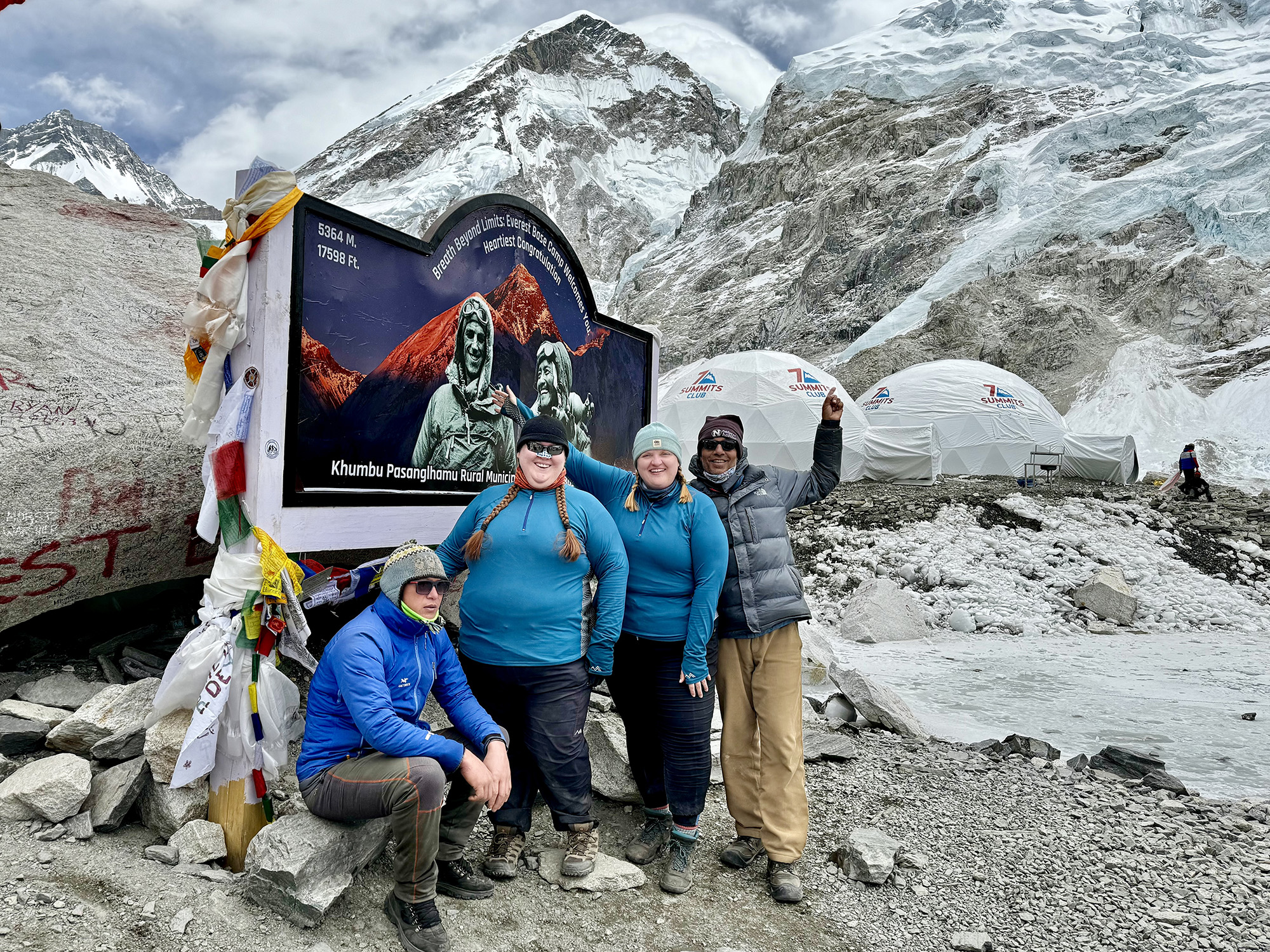
 Group Size: 2 PAX Mimimum
Group Size: 2 PAX Mimimum  Duration: 19 Days
Duration: 19 Days  Trip Start: Kathmandu
Trip Start: Kathmandu  Trip End: Kathmandu
Trip End: Kathmandu  Average Dist. per Day: 6 KM
Average Dist. per Day: 6 KM  Average Time per Day: 8-10 Hrs
Average Time per Day: 8-10 Hrs  Trip Grading: Challenging
Trip Grading: Challenging 